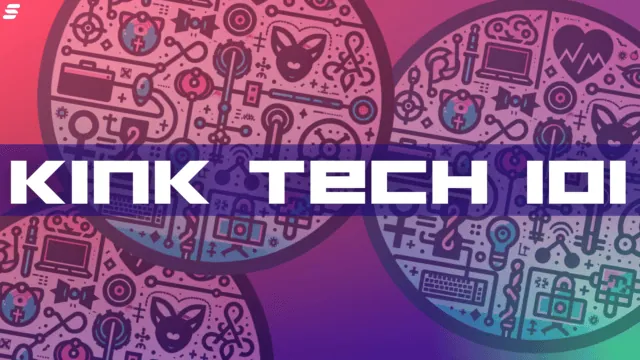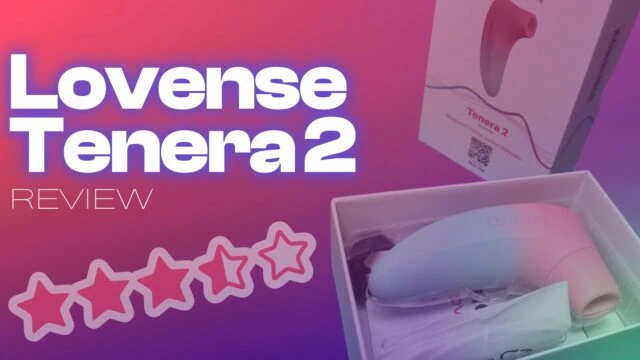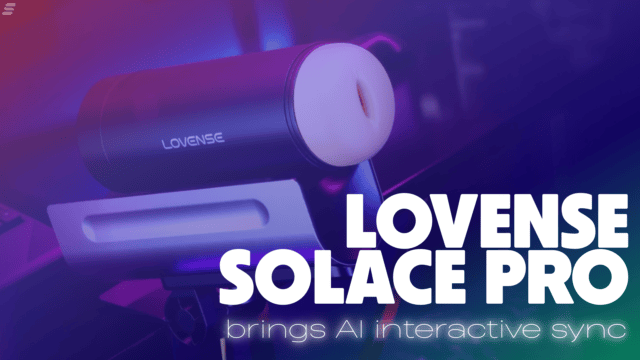Scientifically, the emotion of love can be boiled down to the release of the hormone, oxytocin. This is released when we fall in love with someone, during intimate touch, cuddling, and orgasm. And while we may be able to computerize our emotions, the idea of manufacturing them may seem like a repulsive concept—particularly love. An ethical question arises: Why would you want to taint such a raw human experience with science and technology?
We spoke with technologist and creative coder, Tigris Li, about her “painful desire” to quantify love in to learn about the consequences and possibilities of ‘Romance Tech’ on our relationships in a fast-growing digital world.
Combining her skills as a hardware engineer and 3D motion designer, Li creates multi-sensory mediums. All paths seemed to lead to this. As a teen, she was a successful Youtuber with tens of thousands of subscribers to her Minecraft 3D design animations. Alongside which, she spent her free time building mini robots from old remotes and bits of electronics.
After spending time studying at London College of Communications and the famous University of Arts, Central Saint Martins, she learnt about the impact of “experience and environmental design” on human interactions.
Li, in her twenties, uses these skills to “look at the relationship between humans and technology to foster emotional intelligence,” she explained to SEXTECHGUIDE.
What is Data Romantics?
While admitting to having an obsession with quantifying her own and other people’s feelings, Li shared an awareness that while her work might be functional, it is not necessarily logical. Perhaps the same could be said for love in its function of forming close human relationships, but irrational in its impulses.
Nevertheless, earlier this year, Li put on Data Romantics, an experimental dating lab and exhibition.
This ‘playground’ was designed to explore technological perspectives around relationships, the show was well timed over the most romantic week of the year, Valentine’s.
Guests were invited to interact with the Tinder Wall, to “brew memories”, and even enter a “lovebox” hormone installation, called the Incu-dater.
“I just wanted to build a box and see if I could make people fall in love.”
Tigris Li

Li shares that while it’s a speculative idea, this might not be something that’s too distant “and could potentially be a reality.”
The machine works whereby you and your partner go into the box, and, using a dial from 0-100, you rate how much love, happiness, sadness, disappointment, and anger you feel towards each other. After inputting these emotions, you press a button and it prints out a receipt to show how much love and happiness is in your relationship. An algorithm that Li created then calculates how much oxytocin you would need in order to “rebalance the relationships.”
Couples are then given the option to press another button to “take in the oxytocin”.
What Li discovered was that because these couples had this data printed out—”that says exactly what is wrong, how much love you feel, how much anger you feel, disappointment, etc.”—many felt prompted to have a discussion about it, to talk about the reasons why, “and they just resolved it in that box” instead of taking the easy solution: inhaling the hormone.
“And I think that that’s more the idea of all my installations, is that they just prompt you to have these conversations, forcing you to confront the realities that are often very normal in people’s relationships.” Therefore, a new question is posed to couples: “Do you want a quick fix and get these hormones? Or do you actually want to take this and walk out and actually resolve it? Face-to-face and in a human way?”
To clarify, while Li did find a liquid form of oxytocin online, there is little evidence that ingesting it has a positive effect on feelings of love, and some have argued it can have adverse repercussions. So instead, if couples did decide to press the “oxytocin button”, Li constructed an aromatherapy experience of diffusing scents that are most commonly associated with love, patchouli and rose.
There is evidence that scent is a powerful trigger for positive emotions, with a study finding a positive impact of aromatherapy on relieving depressive symptoms. Unlike seeing or hearing, the olfactory system (our sense of smell) bypasses the thalamus and goes straight to the amygdala and hippocampus which directly correlates to our emotions and memory retention.
Which is why Li created the experience Brewing the Tastes of Memories. The user is invited to think back to a moment, choose three emotions, and then identify what smell reminds you of that. Using the breath, they can then “brew” this memory out botanical scents, and then “receive a drinkable compilation of their memory” collected in a vial.
Another piece of the exhibition was Li’s Tinder Wall. A wall made up of vintage phones that were hacked and connected to an MP3 player and arduino to play out the audio that was recorded by her friends. The recordings were comprised of “terrible first messages” that Li had received on dating apps.
“I can remember one vividly because there was this woman in her mid 40s, and her very first message to me was ‘I want to dominate you.’ And I just thought that was hilarious and so interesting how digital screens can allow you to have this different persona.”
This is evident with accounts like @Beam_Me_Up_Softboi and @TinderNightmares, where online people feel free to say “more crass things” or other “things that you wouldn’t normally say to someone who you first meet” but as Li explains, there’s this “digital barrier” and because you’re not physically there, there’s this “safety net”.
She goes on to say that the installation was intentionally confrontational in making people hear these messages as opposed to the banality of us having gotten so used to reading them.
The Problem with Quantifying Love
Similar to people’s fears around sex tech replacing sex, comes a fear of romance technology replacing human intimacy and the possibility of creating more disconnect. This is evident in our phones distracting us from the relationships we often need to tend to that are right in front of us. Or perhaps the gamification of online dating inhibiting us from making real-life connections; turning people into online avatars, there for our quick dopamine fix and ego boost at the touch of a swipe.
“I don’t think replacing human interactions should ever be a thing. I don’t think that’s the reason why technology was built, technology was built to help enable us to build, build new things, and to help us and like to enable us to do more as individuals, you know, rather than replacing us.”
However, Li does share that we need to keep an eye on the tech that may be cause for concern.
“AI chat will recommend or automatically reply for you. I think that those kinds of communicative elements are a bit scary because it’s no longer you as a person. Even if you’re texting someone, it’s not you writing to another person. Even if it’s through your own digital dialect, it could potentially become this autofilled AI conversation.”
She explains that ultimately it ends up being “just two computers talking to each other rather than two actual individuals.”
Changing Our Relationship With Technology
Let us not forget that technology is not devoid of “the human”. It is inextricably linked to the ways in which we work, and we often forget that “it takes a human to actually code the software, to build the hardware, and to determine what it communicates as an object and what it communicates when someone interacts with it.”
Technology is “just chunks of metal that are put together” that are “humanly made” and therefore, it depends who is making it and what the intention is on the impact.
When created with human connection in mind, Li says she thinks “it can impact our love lives by enabling us to extract ourselves a bit more, or being more self-conscious and raising our self-awareness.”
To achieve this, we need to re-intentionalize what we want to do with technology, as opposed to letting technology ‘do’ us. Li proposes we look at technology on a spectrum of the digital and the analogy, and choose where on the sliding scale you want to use technology depending on the situation and moment.
That is, in using technology to navigate our relationships, we can decide how much to use and in what instance. For Li, she sees it “as an accessory, bridging the gap in between moments” of physical connection, making it more about “enabling face-to-face conversation.”
For example, people in long-distance relationships, “we can build sensory tools to mimic feelings” like the “feeling of a hug, or holding your hand” and it’s not to replace physical interaction or attraction, “because nothing can ever replace that in my opinion, but it’s more about filling that in between moment, because a hug releases hormones,” and this can allow you to “survive until you see them again.
In queer dating, technology has found to have been a real saviour for LGBTQ+ people looking for love. One study found that the number of queer couples who met online was roughly 70% compared to 20% of heterosexual couples in 2010.
As a queer person, Li explains that dating apps made it a lot easier to find people romantically without having to question the other person’s sexuality or intentions. “We both know what the intentions are, let’s just set a date.”
Technology, while often being referred to as a digital barrier, in this instance, helps to eliminate the everyday social barriers that come with living in a heteronormative society.
She says “it’s fun to think about what the end goal is” for technology, and for the case of dating apps, “it’s to be with someone physically, grow a future together, or, for other reasons too.”
Love Is a Verb
Contrary to the scientific analysis of love as a quantifiable release of hormones, let’s be reminded of Massive Attack’s profound lyrics: “Love is a verb. Love is a doing word.” In this case, can technology ever really replace love when it’s such an active element of human nature.
And while ever present fears around technology replacing humans, whether that’s in the workforce, in sex, or in this case, love, as long as we intentionally create and use it in ways that support out relationships, surely these fears can be dispelled.
Simply put, technology is a tool for making our lives easier, and when it comes to our romantic lives, Li believes these tools can be used as a bridge for human connection, as a medium to help express different emotions, and as a reminder to turn towards our relationships.
Will we start to see love boxes popping up on every street corner any time soon? Unlikely. But given the talent, skill and wisdom of this creative technologist, we will be looking forward to seeing what Tigris Li has in store for us in the future.
Read Next: Would you want your lover to live forever in the metaverse?









Leave a Reply